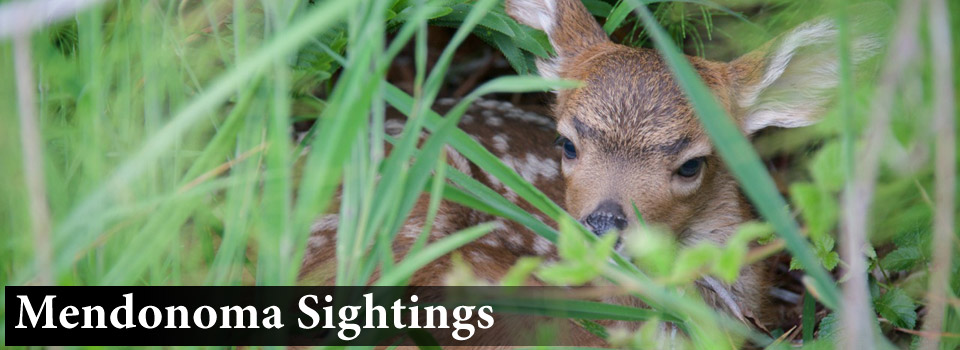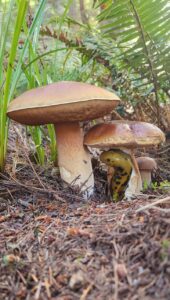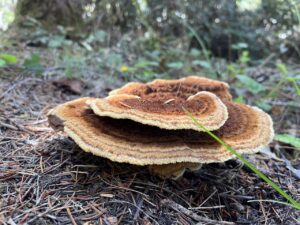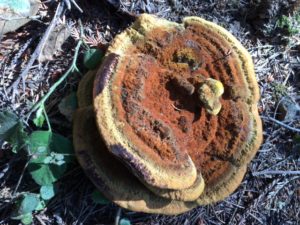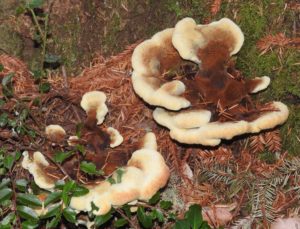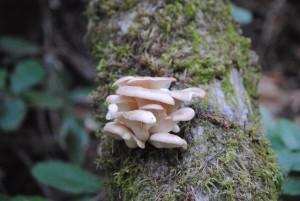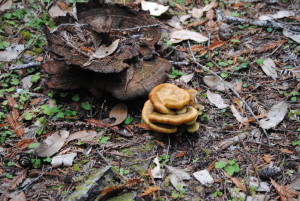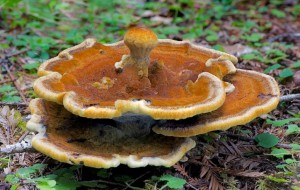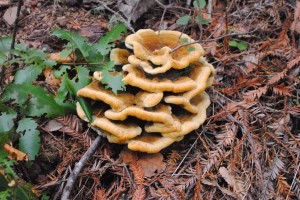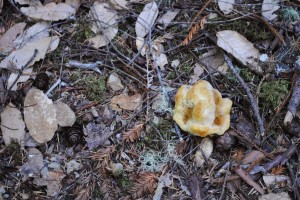The rain we received a little over three weeks ago continues to pay dividends with mushrooms appearing on the Mendonoma Coast. Patty Davenport found this group of Boletus edulis, King Boletes, with a Banana Slug feasting at what she called the "breakfast bar." King Boletes are delicious edible mushrooms that are a treat to find.
Roxanne Holmes photographed a non-edible mushroom, a Dyer's Polypore.
This mushroom's job is to decompose dead wood. Dyers of yarn covet these as when young, like this one, they dye yarn yellow/orange. When mature, they dye yarn a warm brown.
Other mushrooms are appearing now, a welcome sight!
Thanks to Patty and Roxanne for allowing me to share their photos with you here.
The fog pulled back today, showing us the Pacific Ocean for the first time in a few days. Temps climbed a bit too, low 70's. It's a beautiful autumn day here on the Mendonoma Coast.
